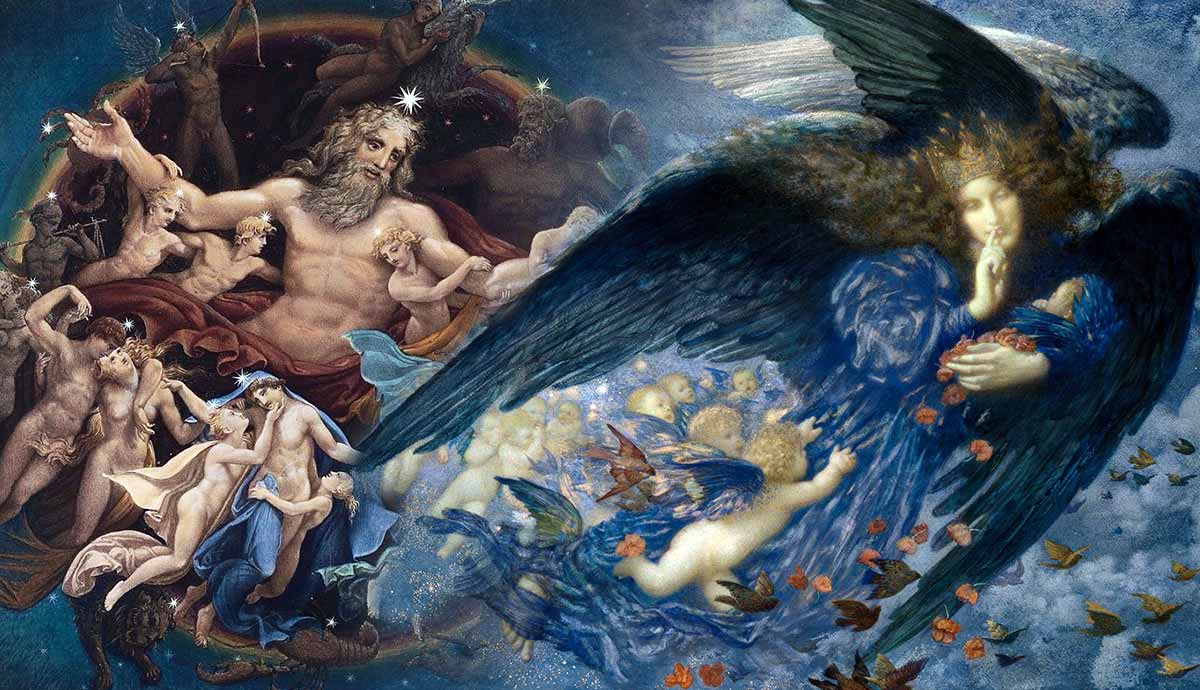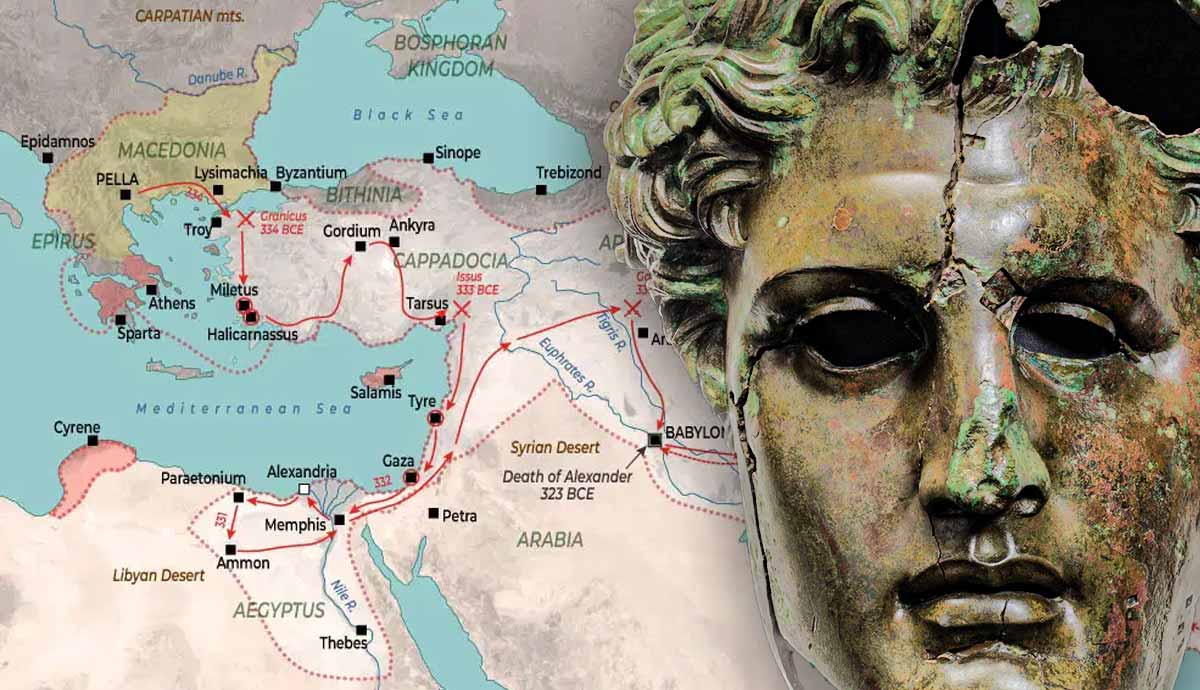
Many biblical narratives were orally transmitted for generations before being written down. Traditional biblical scholars and apologists defend the originality and historical value of such Bible stories.
For agnostics and liberal believers, the evidence is overwhelming that Israelite scribes and priests often based characters, stories, rituals, and prose on prior pagan myths and belief systems. This is especially evident in the so-called hero narratives, devotions, and hymns in biblical and pagan literature across the ancient Near East.
Conflicting interpretations are influenced by additions, redactions, editing, and multiple translations of extant copies of copies of ancient biblical literature and ancient texts. The provenance of relevant texts is fairly reliable, but timelines and sources of the origin of copied biblical manuscripts are often obscure. The Dead Sea Scrolls texts proved that at least parts of the Septuagint (LXX) version of the Bible date back to the 4th Century BCE.
1. The Bible Story of Noah and the Sumerian Tales of Atrahasis, Ziusudra, and Utnapishtim

Many ancient cultures have supernatural great flood stories with the continuity of the human race ensured by one righteous hero. The biblical story recounts God’s frustration and anger with the destructive and out-of-control human race. God then decides to destroy all life upon the earth. One good man, Noah, is told about this and instructed to build and provision a large ship – the ark. God instructs him to take his wife, sons, daughters-in-law, and precise numbers of all the animals to restart life afterward. The earth is then destroyed and repopulated by Noah’s descendants.

In extant Sumerian and Old Babylonian cuneiform tablets, a similar story is recounted. The gods are frustrated and furious with the continuous noise of humans. The name of Noah’s counterpart in the Sumerian legend is Ziusudra (ca 2300 BC). In a later version in Old Babylonian ca 1646 BCE, he is called Atrahasis. Around the middle of the Old Babylonian Empire, he and the flood account are weaved into the Epic of Gilgamesh as Utnapishtim (also Pir-Napishtim). All these texts predate the Hebrew sacred texts, which would later become the Hebrew Bible.

Student scribes practiced their skills by copying these stories over and over. Several copies and fragments dating across almost two millennia have been found in Mesopotamia, including the ruins of the once-great palace and library in Nineveh.
2. Moses and Sargon of Akkad

The Bible story of Moses is set in the time of a cruel Pharaoh. A Pharaoh who ordered all Hebrew baby boys killed at birth to stop the Israelites from increasing in number and becoming a threat. A populous Hebrew nation, the Pharaoh feared, could lead to insurrection and rebellion in Egypt.
In the biblical story, Moses’ mother makes a wicker basket which she seals with pitch to make it waterproof. She places Moses in the basket and floats it down the Nile where Pharaoh’s daughter bathes. The latter rescues the infant and raises him as her son – with a privileged princely education, including astronomy, religion, mathematics, and writing, as attested by Egyptian correspondence about the education of foreign princes at their court.
The Hebrew priests revised, edited, and added to the existing Israelite sacred texts during their Babylonian captivity. Skeptics believe that this was when the Bible story of Moses was developed from ancient Mesopotamian hero stories.

Sargon, the founder of Akkad, had a similar basket trip down the river as an infant. His mother was a priestess who birthed him in secret. She also made a wicker basket sealed with pitch and set him afloat on the Euphrates River. He, however, was rescued and raised by a humble peasant, until the powerful goddess Ishtar (formerly Inanna of the Sumerians) took an interest in him. As a youth, he became the cupbearer of the king of Kish, whom he later overthrew, before setting about building the world’s first empire.
Sargon’s historicity around 2279 BCE is attested by several cuneiform tablets, including some recovered at Amarna, Ashur, and Nineveh, and Hittite fragments. His birth legend is recorded in later copies from Babylon. Biblical scholars maintain that the fragmented texts are not conclusive, and that orally transmitted Bible stories predate Sargon’s birth account.
3. The Biblical Job and the Mesopotamian Righteous Sufferer

The Book of Job is written in a unique style. It differs from the other Bible Books in the context, customs, names, and events described. Scholars have speculated that it corresponds more to Arabic than to Israelite stories.
Job is wealthy in property and family. Satan, at this time still an angel, challenges God that Job is only pious because everything in his life is wonderful. God accepts Satan’s challenge, who then destroys Job’s possessions, family, and finally Job’s health. Job refuses to curse God. He does not understand why he is suffering but accepts that he does not have the right to question God. The biblical story ends with God explaining to Job in beautiful phraseology the vastness and intricacy of the universe. Job’s life ends with him richer and happier than before his suffering started.
The Mesopotamian story Ludlul-bēl-Numēqi or The Righteous Sufferer, has a similar background of a pious man following religious rules meticulously. Like Job, he does not understand his change of fortune. He questions his god when he loses everything, including his health. Unlike Job, however, he dies in his misery at the end of the story.
Poetic descriptions in Job are similar to many pre-biblical ancient texts, including the Enuma Elish.
4. Proverbs, Ecclesiastes, and Egyptian Teachings

Scholars have argued about borrowing of texts between the Bible and ancient Egyptian instruction literature since relevant hieroglyphic texts were deciphered. The majority agrees that most of the surviving texts and fragments on papyrus and ostraca indicate that Hebrew scribes borrowed from older Egyptian texts. There are arguments to be made for both sides being rooted in even older sources, and some even see a universal knowledge and common sense coined by ancient sages.
The biblical books of Ecclesiastes and Proverbs are ascribed to the Israelite king Solomon who investigates the meaning of life by contemplating man, his motives, and his actions. He comes to many wise conclusions during his endeavors.
In the last chapter of Ecclesiastes, Solomon advises young people to enjoy their lives while they are young. He describes how human abilities diminish progressively with age until nothing is left in the end. With beautifully crafted metaphors, he illustrates the decline of the senses until only fear is left.

Part of the Egyptian text of the Prisse Papyrus laments the same decline in a similar style. The papyrus starts with the last pages of the Instruction of Kagemni. It is then followed by the full text of the original teachings or sebayt of the Vizier of Pharaoh Djedkare, named Ptahhotep, dating to the 4th Dynasty.
The Prisse Papyrus is a copy from ca 2300 BCE made during the 12th or 13th Dynasty. Today it is housed in the Biblioteque Nationale in Paris. We know it is a copy because the scribe states at the end that these are the exact words, copied as he found them. It is seen as the oldest book in the world.

The hieratic text of the Instruction of Amenemope, of which several sayings were found in Stockholm, Paris, and Moscow, and a late (ca 1000BCE) ostracon in Cairo, was composed by Amenemope as instructions from a father to his son. Several scholars have quoted in comparison specifically the words of Proverbs 22:17 to 23:10, for example, the words:
“Have I not written for you thirty sayings of counsel and knowledge?” Proverbs 22:20
“Look to these thirty chapters; they inform, they educate.” Instruction of Amenemope
It is noteworthy that the 1986 revised Catholic Bible – New American Bible – even mentions Amenemope by name in Proverbs 22:19:
“I make known to you the words of Amen-em-Ope.”
The Instruction of Ani from the Papyrus of Ani, ca 18th Dynasty, contains the same teachings as the above examples. The sebayts (teachings) deal with the same subjects. They emphasize honesty, justice, self-control, the importance of striving for a tranquil life without strife or greed and stress the ultimate power of the gods. This, together with the Hebrew Bible, led scholars to speculate that all the teachings may stem from a single, older source. Egyptian wisdom teachers date back to Imhotep, the vizier, builder, physician, astronomer, and teacher of Pharaoh Djoser (3rd Dynasty ca 2686 – 2636 BCE).
5. Biblical Psalm 104 and Akhenaten’s Hymn to the Aten

The similarity in style, expression, and tone between Psalm 104 and the Hymn to the Aten (14th century BCE) of Pharaoh Akhenaten cannot be denied. Other similar linguistic patterns of praise and reverence ascribed to Akhenaten in worshiping the Aten as sole god, are present in wording on the Amarna boundary stelae. Similarities to biblical psalms and other descriptive biblical narratives are discernable.
6. Song of Songs and Sumerian Literature

The biblical Song of Songs has similarities to the Sumerian temple hymns and Akkadian hymns, and love songs. It accompanied the annually celebrated marriage liturgy of the Dumuzi-Inanna cult and the later Tammuz-Ishtar cult of the Sumerian and Akkadian eras. The first poet whose name we know was an Akkadian high priestess, a daughter of Sargon named Enheduanna. Several of her poems and hymns survived.
7. Bible Stories and Anonymous Mesopotamian Literature

The first fiction story that we are aware of comes from ancient Mesopotamia. It is a philosophical discourse between a bird and a fish. The idea of a philosophical conversation between non-humans in human-style dialogue to illustrate a point is reminiscent of the biblical story found in the book of Judges (9:8-15), where the trees hold council to appoint one tree as their king. The Mesopotamian example of using characters from the natural environment, in this case, predates Bible stories. It serves, though, to illustrate the backdrop against which the biblical narratives of the patriarchs developed, first as oral history beginning with Abraham and later in text format.
Certain Bible Stories and Practices Grew From Already Established Roots

It is only natural that Bible stories would be colored by surrounding influences during ever-changing times in their communal lives and developing culture. We only need to look at how the Israelite religious rites and rituals changed and adapted throughout the timeline of the Bible to realize how secular and alien practices were assimilated.
Several portions of the Tanakh were passed down orally by a society in the process of becoming a nation, who at times were nomads, and at times were living among strangers in exile. Sacred texts were eventually recorded on separate scrolls over many centuries by different authors with varying agendas and styles to make their messages clear in their own contemporary societies.
The question may also be asked whether similarities, with turns and embellishments particular to each phase of human culture and times, are not based on historical events that affected their ancestors. Maybe there were events and wisdom in deep-seated human memory and genetics, which happened before people split into cultural groups.
What remains then of the matching roots on which such narratives are based, are the concepts of faith and wisdom:
“Faith is a knowledge within the heart, beyond the reach of proof.” Khalil Gibran
“Ages ago I (wisdom) was set up, at the first, before the beginning of the earth … before the mountains had been shaped, before the hills, I was brought forth. Before He made the earth with its fields, or the first of the dust of the world. …. When He established the heavens, I was there…” Book of Proverbs, The Bible










